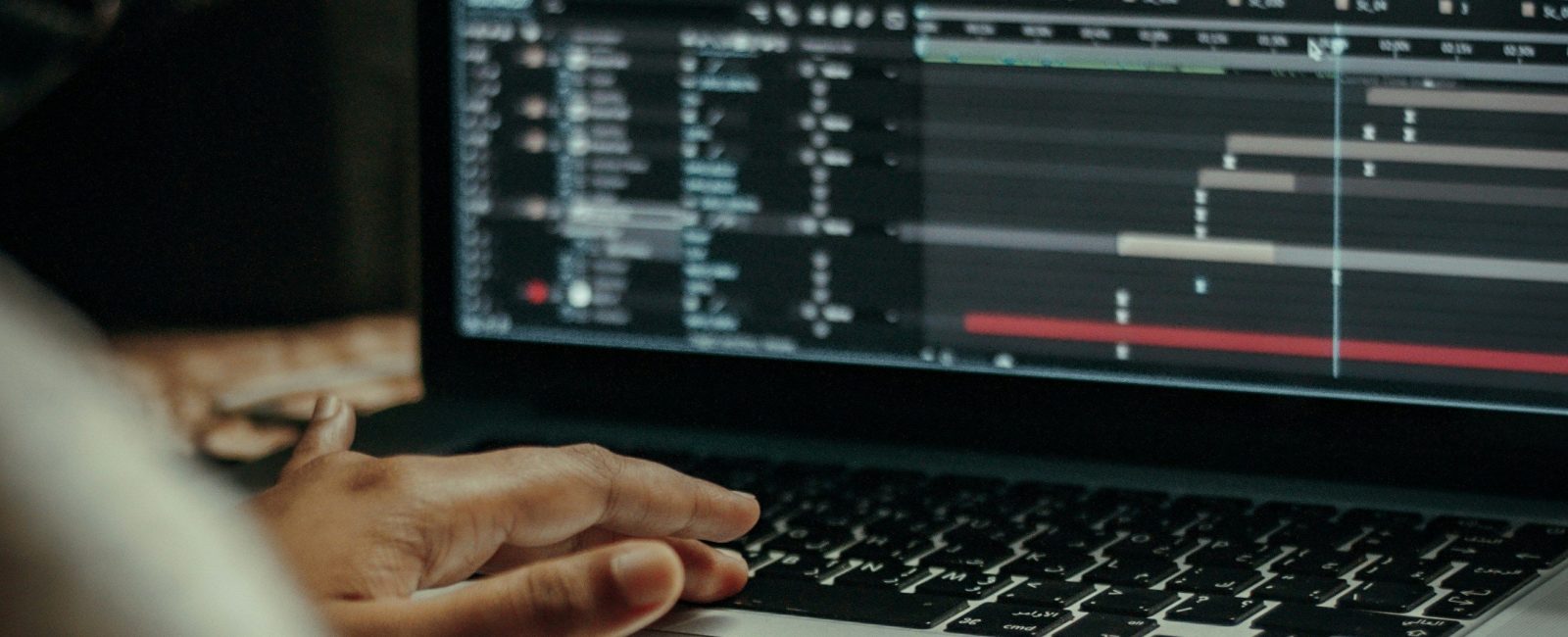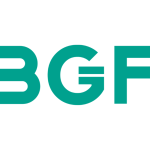
In digital marketing, motion graphics have become a super powerful tool, changing the way businesses connect with their audiences. This cool new tool brings static visuals to life, making dynamic content that’s both captivating and informative.
Motion graphics are basically a mix of animated design elements like text, images, and video, all put together to create interesting visual stories. This mix of creativity and technology lets marketers take complex ideas and break them down into simple, interesting content that people can easily digest across different platforms.
The whole thing started with those old animated title sequences and logos in the cinema and on TV. As technology advanced, motion graphics became more sophisticated and accessible. The digital revolution of the 1980s and 1990s democratized motion graphics, putting powerful tools in the hands of marketers through personal computers and specialized software.
The internet age and the rise of social media in the 21st century changed marketing forever. Now, businesses have a whole toolkit of ways to stand out in a busy digital marketplace. This has been a total game-changer, letting brands get their messages across in super creative ways.
Motion graphics have a big impact on marketing metrics.Studies show that videos with motion graphics can increase conversion rates by up to 80% on landing pages.And social media posts with motion graphics get 55% more engagement than those without.
And with new technologies like augmented reality (AR) and virtual reality (VR) on the rise, the potential for creating more engaging brand experiences is huge. Plus, with tools that use artificial intelligence to make things easier, motion graphics are becoming more accessible for businesses of all sizes.
The Power of Visual Communication
Visual content is now a key part of good marketing strategies. Our brains process visual information 60,000 times faster than text, which makes it a great way to get people’s attention and communicate messages quickly and easily.
Why visual content is crucial in marketing
- Instant impact: In a world where attention spans are shrinking, visual content allows marketers to make an immediate impression on their audience.
- Improved engagement: Visuals are more likely to be shared, liked, and commented on across social media platforms, increasing brand visibility and reach.
- Enhanced comprehension: Complex ideas can be simplified and communicated more effectively through visual representations, making information more accessible to a wider audience.
- Emotional connection: Visual content has the power to evoke emotions and create a stronger connection between the brand and its audience.
- Brand differentiation: In a crowded marketplace, unique and compelling visuals can help a brand stand out from competitors.
How motion graphics enhance message retention
Motion graphics take the power of visual communication a step further by adding the element of movement and animation:
- Increased attention span: Dynamic visuals capture and hold viewer attention longer than static images, allowing for more comprehensive message delivery.
- Storytelling capabilities: Motion graphics enable marketers to tell a story or explain a concept in a sequential, easy-to-follow manner, enhancing understanding and retention.
- Multi-sensory experience: By combining visual elements with sound and movement, motion graphics create a more immersive experience that engages multiple senses, reinforcing the message.
- Simplified complex information: Abstract or data-heavy concepts can be broken down into digestible, animated segments, making them easier to grasp and remember.
- Memorable branding: Animated logos and visual elements create a lasting impression, improving brand recall and recognition.
- Adaptability: Motion graphics can be easily adapted for various platforms and screen sizes, ensuring consistent message delivery across different marketing channels.
Motion graphics are a powerful tool for marketers. They can create content that grabs people’s attention and helps them remember your message. This leads to better engagement and conversions. As the digital world keeps changing, the role of motion graphics in visual communication will only get more important. They offer new ways to connect with audiences and deliver strong marketing messages.
Types of Motion Graphics in Marketing
Motion graphics are now a key part of most marketing strategies. They offer lots of ways to engage audiences and convey information. Here are five main types of motion graphics that are often used in marketing:
1. Animated Logos
Animated logos breathe life into a brand’s visual identity, making it more memorable and engaging:
- Dynamic elements that reveal or transform the logo
- Subtle movements that draw attention to specific parts of the logo
- Animations that tell a brief story about the brand’s essence
- Responsive animations that adapt to different platforms and screen sizes
These animated logos can be used across various digital touchpoints, from website headers to social media profiles, creating a consistent and eye-catching brand presence.
2. Explainer Videos
Explainer videos use motion graphics to simplify complex concepts or showcase products and services:
- Animated characters or icons to represent ideas or user personas
- Step-by-step visualizations of processes or features
- Kinetic typography to emphasize key points
- Seamless transitions between scenes to maintain viewer engagement
These videos are particularly effective for introducing new products, explaining services, or breaking down complex business models in an easily digestible format.
3. Social Media Animations
Social media animations are short, attention-grabbing motion graphics designed for platforms like Instagram, Facebook, and Twitter:
- Looping GIFs that convey a single message or emotion
- Animated infographics that present statistics or data
- Cinemagraphs that combine still images with subtle moving elements
- Story animations optimized for vertical viewing on mobile devices
These animations help brands stand out in crowded social media feeds, increasing engagement and shareability.
4. Infographic Animations
Animated infographics transform static data visualizations into dynamic, interactive experiences:
- Graphs and charts that build or change over time
- Animated icons and illustrations that represent data points
- Progressive reveal of information to guide viewer attention
- Interactive elements that respond to user input or scrolling
By animating infographics, marketers can make data more engaging and easier to understand, leading to better information retention.
5. Product Demonstrations
Motion graphics bring product demonstrations to life, showcasing features and benefits in a visually compelling way:
- 3D animations of product components or assembly
- Animated overlays highlighting key features on real product footage
- Virtual product tours that showcase different angles and uses
- Before-and-after animations demonstrating product effectiveness
These animations allow potential customers to visualize product use and benefits more effectively than static images or live-action video alone.
With these tools, marketers can make content more engaging, informative, and memorable for their target audience on different platforms and marketing channels.
Benefits of Using Motion Graphics
Motion graphics have become a must-have in today’s marketing world, with tons of perks that static content just can’t compete with. Let’s dive into the big reasons why incorporating motion graphics into your marketing game plan is a total win:
1. Increased Engagement
Motion graphics captivate audiences in ways that static images or text alone cannot:
- Eye-catching movement draws and holds viewer attention
- Interactive elements encourage active participation
- Dynamic storytelling keeps viewers invested in the content
- Increased watch time on videos and longer website visits
By leveraging motion graphics, marketers can significantly boost engagement rates across various digital platforms, leading to higher conversion potential.
2. Improved Information Retention
The combination of visual and auditory elements in motion graphics enhances the audience’s ability to remember information:
- Multi-sensory experience reinforces key messages
- Sequential presentation of information aids in logical understanding
- Visual metaphors and analogies make concepts more memorable
- Repeated viewing of looping animations strengthens recall
This improved retention translates to better brand recall and a higher likelihood of audience action based on the information presented.
3. Enhanced Brand Recognition
Motion graphics provide unique opportunities to reinforce brand identity:
- Animated logos create a lasting visual impact
- Consistent use of brand colors, fonts, and style in animations builds familiarity
- Character animations can embody brand personality
- Distinctive motion styles become associated with the brand
By consistently using motion graphics across marketing materials, brands can create a strong, recognizable visual identity that sets them apart from competitors.
4. Simplified Complex Concepts
One of the most powerful benefits of motion graphics is their ability to break down and explain complicated ideas:
- Abstract concepts visualized through concrete imagery
- Step-by-step animations of processes or workflows
- Data visualization that brings statistics to life
- Technical information presented in an accessible, engaging format
This simplification not only makes content more understandable but also more shareable, expanding the reach of complex messages to a broader audience.
5. Versatility Across Platforms
Motion graphics adapt seamlessly to various digital platforms and marketing channels:
- Easily resized and reformatted for different screen sizes and orientations
- Effective on websites, social media, digital ads, and presentations
- Can be segmented into shorter clips for different uses
- Suitable for both online and offline marketing materials (e.g., digital signage)
This versatility ensures consistent brand messaging and visual appeal across all customer touchpoints, maximizing the impact and reach of marketing efforts.
If marketers can tap into these benefits, they can create more effective, memorable, and impactful campaigns that resonate with their target audience and drive better results across the board.
Implementing Motion Graphics in Marketing Strategies
If you want to use motion graphics in your marketing strategy, you’ve got to plan and execute it right. Here’s how to do it:
1. Identifying Suitable Content for Animation
Not all content benefits equally from animation. To maximize the impact of motion graphics:
- Analyze complex data or processes: Concepts that are difficult to grasp in static form often benefit from animation.
- Consider storytelling potential: Content with a narrative arc is ideal for motion graphics.
- Evaluate visual appeal: Topics that lend themselves to interesting visuals are prime candidates.
- Assess time sensitivity: Information that changes frequently may not be suitable for labor-intensive animations.
2. Aligning Motion Graphics with Brand Identity
Consistency is key in branding. When creating motion graphics:
- Use brand colors and typography: Ensure all animated elements adhere to your brand guidelines.
- Incorporate brand personality: Reflect your brand’s tone and voice in the style of animation.
- Maintain logo integrity: If animating your logo, preserve its essential elements and recognition.
- Create a motion style guide: Develop a set of animation principles that align with your brand identity.
3. Optimizing for Different Platforms
Each platform has unique requirements and audience expectations:
Web
- Consider load times: Optimize file sizes to ensure fast loading on websites.
- Design for responsiveness: Create animations that adapt to different screen sizes.
- Use appropriate formats: Choose between GIFs, CSS animations, or video formats based on complexity and purpose.
Social Media
- Adhere to platform specifications: Follow size and length guidelines for each social network.
- Design for sound-off viewing: Ensure your message is clear without audio, using captions when necessary.
- Create platform-specific versions: Adapt animations for feed posts, stories, and ads separately.
Presentations
- Ensure smooth integration: Design animations that complement rather than distract from spoken content.
- Prepare for offline viewing: Export animations in formats compatible with presentation software.
- Consider audience attention span: Keep animations concise and relevant to maintain engagement during live presentations.
If marketers pay close attention to these factors, they can create and implement motion graphics that effectively enhance their overall marketing strategy, engage their audience, and reinforce their brand across various platforms.
Conclusion
Motion graphics are a powerful tool for businesses to captivate audiences and convey messages with unprecedented impact. As we’ve explored, the importance of motion graphics in modern marketing cannot be overstated. Motion graphics offer a versatile and effective means of communication across various platforms. They can boost engagement and improve information retention. They can enhance brand recognition and simplify complex concepts.
Motion graphics are great at getting your message across because they’re so dynamic. They can help you stand out in a crowded digital space and create a lasting impression on viewers. With animated visuals, you can tell your story more effectively, explain your products or services with clarity, and build stronger connections with your audience.
As we look to the future, it’s clear that motion graphics will continue to play a crucial role in shaping marketing strategies.For businesses looking to stay ahead of the curve, now is the time to incorporate motion graphics into their marketing toolkit.Whether it’s through animated logos, explainer videos, or interactive infographics, the possibilities are endless.
We encourage businesses of all sizes to explore the potential of motion graphics in their marketing efforts.If you’re interested in developing these skills in-house, investing in a comprehensive motion graphic course can be a great starting point.By embracing this dynamic medium, companies can elevate their marketing campaigns, engage their audience more effectively, and ultimately drive better business results in the digital age.












